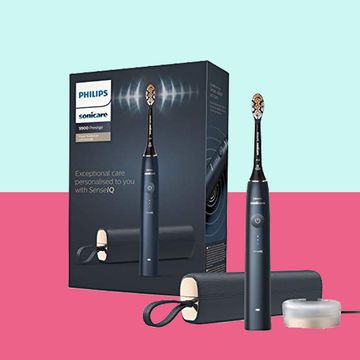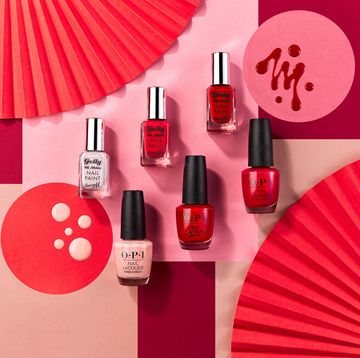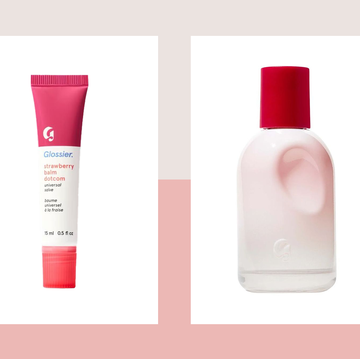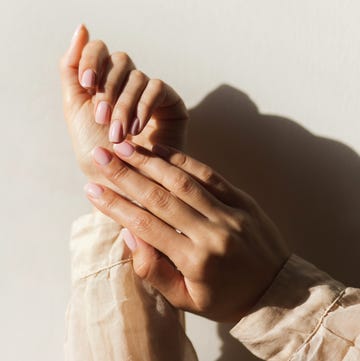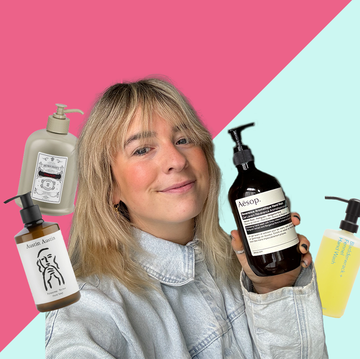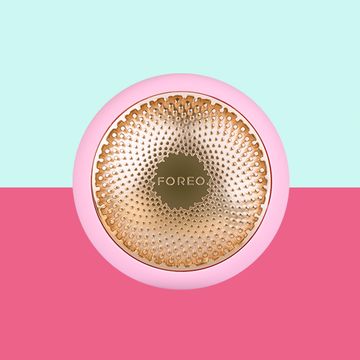Unless you’ve been hiding under a rock on the dark side of the moon, you’ll know there’s no such thing as a damage-free tan. The sun’s rays may feel fabulous (hello, heatwave), but your ‘healthy’ summer glow is actually your skin’s way of crying for help.
But here’s another fact, too: many of us love being tanned and want that golden holiday glow at all costs, even though it’s indisputable proof that skin has been damaged by the sun. It’s one of the main reasons why a small but still sizeable minority of Brits remain sceptical of even the best sun creams. A British Skin Foundation survey found that 12% of over-50s rarely wear SPF when they’re in a hot country abroad, and that figure rises to 45% when they’re in the UK during the summer.
But is it true? Does SPF really stop you getting a tan? It’s one of the internet’s most-searched suncare questions, so – with the UK finally hotting up – we’ve asked the experts to give a definitive answer.
What to read next
What happens when my skin tans?
“Melanin, the coloured pigment within our skin, increases in response to damage from UV rays to try to protect against further damage,” says Clare O’Connor, senior research scientist in skin science at Boots. “The darker the tan, the more damage the skin has incurred. This is why it’s important to use sunscreen daily to protect the skin.”
Burning is the most obvious and acute sign of sun damage, but tanning is a more subtle form that causes long-term issues. “Excess sun exposure damages the DNA of the skin and accelerates collagen degradation, which leads to an increased risk of skin cancer and premature skin ageing,” says consultant dermatologist Dr Mary Sommerlad.
Does wearing SPF affect my vitamin D levels?
There’s a lot of research around vitamin D, showing it plays a crucial role in everything from immunity to bone health. Vitamin D is naturally synthesised by sunlight hitting our skin (which is why our levels plummet in winter), and this is often cited as a reason to skip suncare by the SPF-sceptic brigade.
Not true, says Dr Sommerlad. “There is concern that sunscreen blocks vitamin D synthesis, but a 2024 review of the academic literature found that there was little evidence to show this.” In short, wearing SPF won’t leave you deficient.
Will wearing SPF stop me tanning?
It’s not that simple. “Sunscreen acts as a protective barrier, significantly reducing the amount of UV radiation that reaches your skin,” explains Dr Kemi Fabusiwa, Nivea skincare expert ambassador. “However, even the most diligent sunscreen use won’t completely block out the sun’s rays. Some UV light will inevitably penetrate, triggering melanin production and leading to a tan, albeit a slower and less intense one.”
Can I tan with factor 50?
Even the very highest level of protection isn’t a literal sunblock, says Emma Wedgwood, medical aesthetic injector and skin specialist. “You can still tan with sunscreen that has an SPF of 50. SPF50 provides high protection against UVB rays, blocking approximately 98% of these rays. However, it doesn’t offer 100% protection, meaning a small percentage of UVB rays can still penetrate the skin and contribute to tanning.”
She adds: “SPF50 sunscreen may not fully protect against UVA rays, which can also cause tanning. SPF50 significantly reduces the likelihood of sunburn and minimises tanning, but it does not entirely prevent it, especially with extended sun exposure or infrequent reapplication.”
Does a slow tan cause less damage?
Less damage, yes, but it’s not a guilt-free glow. Clare explains: “UV is present all year round and even short bursts of incidental sun exposure can cause harm to the skin – and this damage can accumulate throughout our lifetime. Using daily SPF products, such as Soltan Protect & Moisturise Lotion SPF30, means the resulting tan has been achieved more slowly and therefore with less skin damage, and is less likely to cause flaking and peeling of the skin.”
I’m determined to tan – is there a compromise you can suggest?
Dr Fabusiwa says: “Unfortunately, there’s no such thing as a ‘safe tan’. Tanning is inherently a sign of skin damage. The good news is that there are safe alternatives for achieving a sun-kissed glow. Self-tanning products offer a fantastic way to get a tan without the harmful effects of UV radiation.” (Find Good Housekeeping’s favourite self-tans here and also our pick of the best instant tans.)
Does a tan built up slowly with high SPF last longer?
It sounds plausible, but is it true? Dr Fabusiwa breaks it down for us: “Contrary to popular belief, a gradual tan doesn’t necessarily last longer. Any tan, regardless of how quickly it develops, indicates skin damage. The pigment melanin, responsible for darkening the skin, is produced in response to UV exposure. While a gradual tan may seem less severe, it’s still a sign that your skin has been exposed to harmful radiation.”
So although taking care to avoid burning is a the lesser of two evils, your body won’t reward you by clinging on to your tan for longer. The key visible difference is that you’re less likely to see peeling from a tan built up slowly, which is probably where this myth stems from.
Can using sun cream get rid of a tan?
On the flipside of this issue, there’s a rise in Google searches for using SPF to fade an unwanted suntan. So is this possible? “Using sunscreen cannot remove an existing tan,” says Emma. “Sunscreen is designed to protect the skin from further UV damage and prevent additional tanning, but it doesn’t have the ability to reverse a tan that has already developed.”
She adds: “To fade an existing tan, the skin needs time to naturally shed the tanned outer layer through the process of exfoliation and cell turnover. Sun protection can help prevent the tan from becoming darker or more prolonged by protecting the skin from further UV exposure. For those looking to expedite the fading of a tan, gentle exfoliation and moisturising can help speed up the skin’s natural renewal process.”
I want to avoid tanning – what can I do?
As already mentioned, it’s impossible to block a tan completely when you’re in the sun, but there are ways to minimise it. As well as choosing a high SPF, “Look for broad-spectrum sunscreens that shield against both UVA and UVB rays,” advises Dr Fabusiwa. UVA protection is separate to the SPF and is shown by the star rating on a sun-cream bottle – five being the highest.
How often your reapply suncare is key, too. “Sunscreen isn’t a one-and-done deal,” says Dr Fabusiwa. “It needs to be reapplied every two hours, or even more frequently if you’re swimming or sweating. This ensures continuous protection throughout the day.”
It’s about quantity as well as frequency. “Most people underestimate the amount of sunscreen needed,” adds Dr Fabusiwa. “A good rule of thumb is to use an ounce (about a shot glass full) to cover your entire body.”
Consider the time of day, too. “The sun’s rays are strongest between 10am and 4pm. Limit sun exposure during these hours to minimise the risk of tanning and sunburn.” Finally, it goes without saying that covering up and staying in the shade is the smartest strategy of all, rather than relying on SPF alone.
5 SPFs loved by GH
Shiseido Expert Sun Protector Face & Body Lotion SPF50+
This GH award winner is an impressive innovation. It combines high protection with a trio of clever technologies that shore up its protective veil for longer. Not only is this veil strengthened by both water and heat, a new AutoRepair innovation rebuilds wear and tear caused by friction and rubbing.
Nivea Sun Protect & Moisture Sun Lotion SPF30
No hanging around with this one. While many SPFs take time to become fully effective, Nivea’s speedy formula offers immediate protection against UVA and UVB rays, and is also highly water-resistant. The moisturising formula ensures it feels lovely to wear, too.
Boots Soltan Active Lotion SPF30 100ml
Want a sporty, sweatproof sun cream that really goes the distance? Try this long-lasting new arrival. A single application protects you for up to eight hours (including three in the water), yet feels weightless. GH loves the convenient ‘twist and squeeze’ dispenser, too – no more scrabbling for stray lids in the sand.
Garnier Ambre Solaire Clear Protect Sun Cream Protection Spray SPF30
Clearly a good choice. The transparent formula ensures there’s no sign of chalky marks on skin (or clothes). It’s lightweight, easily absorbed, quick drying and doesn’t feel greasy either. We also like the spray format for quick, easy application, even on tricky-to-reach areas.
E45 Sun Care Sensitive Spray SPF50+
E45’s latest formula is ideal for skin that doesn’t easily enjoy summer. The fragrance-free spray has been developed by derms to suit anyone with dry, sensitive and/or eczema-prone complexions. And while it’s nourishing, soothing and moisturising, that doesn’t mean compromising with a thick, sticky feel or a streaky finish.













